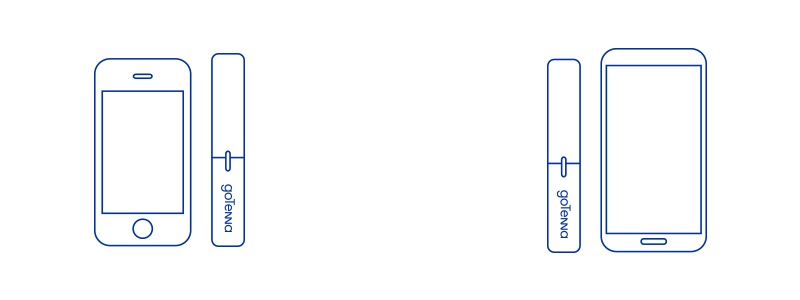 |
| GoTenna unit |
 |
| Fractal Antenna |
goTenna is designing a device that transmits minuscule amounts of information in a single frequency band. What’s more, goTenna works in some pretty adverse conditions. There is no high-powered cellular network transmitting to goTenna batons from high up on a tower mast. Instead, goTenna devices transmit directly to one another, sending text messages and GPS coordinates through wilderness or over ocean waves.
So instead of using fractal designs to get the most band flexibility out of his gadget, Perdomo said, he’s tapping fractals to optimize the radio experience within the narrow confines of goTenna’s chosen radio band. The Multi-Use Radio Service, or MURS, has only 100 kHz of usable capacity, compared to the hundreds of megahertz available to cellular and Wi-Fi services.
How goTenna works
goTenna enables you to communicate without any need for central connectivity whatsoever—no cell towers, no wifi, no satellites—so when you're off-grid you can remain connected. In fact, goTenna will even work if your smartphone is in “Airplane Mode”!
Pair your smartphone to your goTenna device wirelessly, using Bluetooth-LE. Your goTenna needs to be within 20 feet of your phone, so that the two can communicate with each other. Use our free app to type out a text message or share a location. Your smartphone will send the message to your goTenna, which will then shoot it out, via long-range radio waves (151-154 MHz), to the intended goTenna(s).
At the other end, the exact same thing happens, in reverse: the recipient goTenna sends your message over Bluetooth-LE to the smartphone app it's paired with. All of this happens in a matter of milliseconds, and your goTenna will be able to transmit to any goTenna within range.
Multi-Use Radio Service (MURS) | FCC.gov
The Multi-Use Radio Service (MURS) is in the 151 – 154 MHz spectrum range. The most common use of MURS spectrum is short-distance, two-way communications using small, portable hand-held devices that function similar to walkie-talkies.
Similar services include General Mobile Radio Service (GMRS) and Family Radio Service (FRS).

3 comments:
Thanks a lot for this post.
point to point
Cool. I hope they can make the radius a bit wider though.
Nice info, thanks for sharing Fitra Rahim
Post a Comment